It begins with a twig in the bill and the throaty croak of the swamp. They’re creatures of the marshes, the Great Blues, now on ascent to a season in the trees where nests incubate eggs, and where clumsy young legs will soon dawdle on branches until they get their wings.
They call this place the satellite colony, since the rest of the rookery is tucked in a ravine so lush it might as well be the Amazon. This row of trees sprouts at the terminus of the ravine, high above a park and pathway that hosts a lot more humans than herons. Double-crested Cormorants now also roost over the path after fishing the Ballard Locks spillway all afternoon. A Bald Eagle does a cursory spin over the exposed trees, gazing upon opportunity below, before the resident crows escort her out of air space. And, the fresh construction of an Osprey platform to the west awaits the return of the couple who may insist on building their digs, instead, on the railroad bridge where they’ve nested for the past several years.
On a sunny evening, I walk the cement gauntlet below the trees, now painted with cormorant guano and fallen feathers from the preen. I stop by the nests just long enough to check on the new heron couples, and to frame a few shots of heron plumage and eyes reflecting the magic-hour light. Walkers in the know hug the security rail farthest from the guano trail as they pass under 30 or more roosting cormorants. A guy from Arizona asks me where the nearest pay phone is so he can call Billy — the local he just met at a Ballard bar who told him to come to this very spot. Ten minutes later, another guy — who almost fits the description of Billy, with a beat-up bike and the worn serape — marvels at the “web-footed birds perched in the tree” — the cormorants. He says to me, “I can’t believe they can hang on with webbed feet, can you?” I mention the toes and the webbing that constitute the totipalmate foot, and he says, “wow, cool, totipalmate. Right on.”
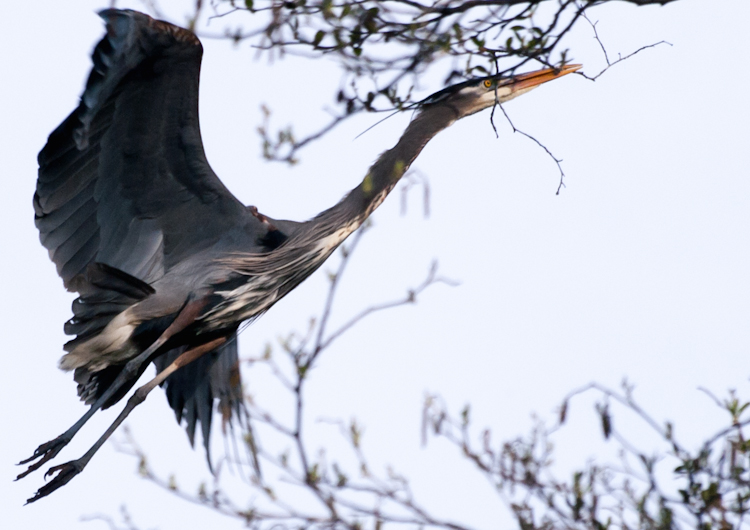
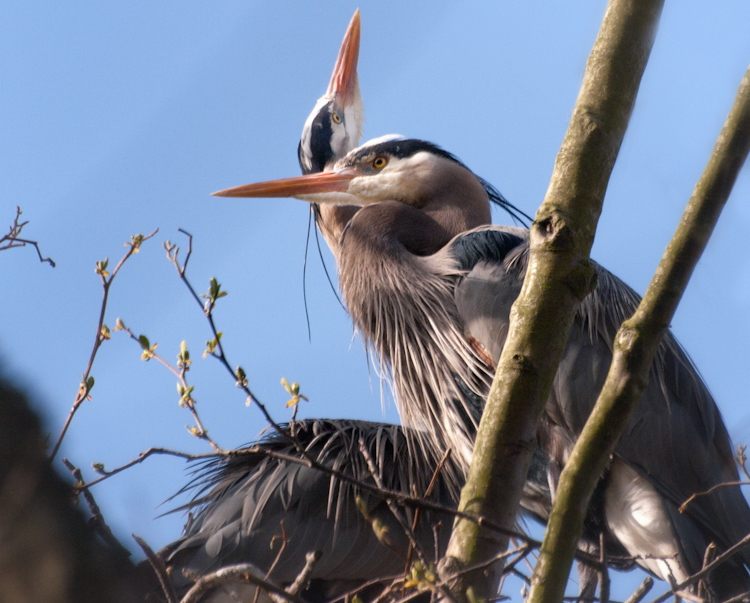
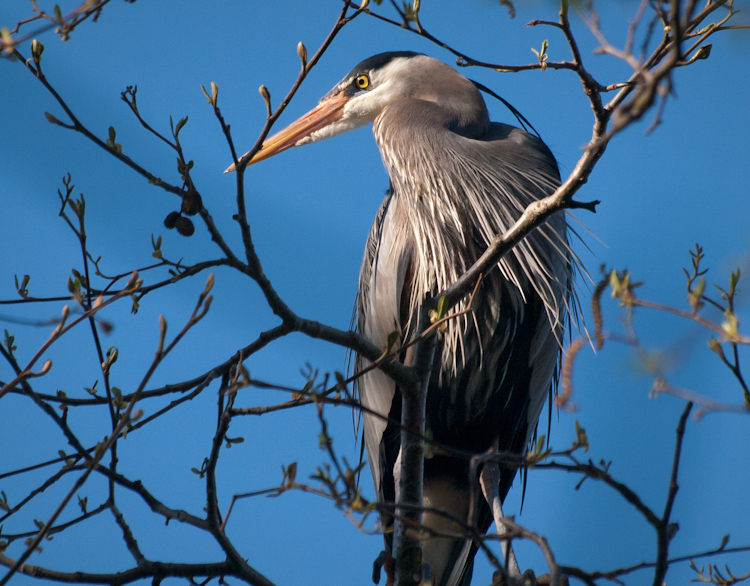
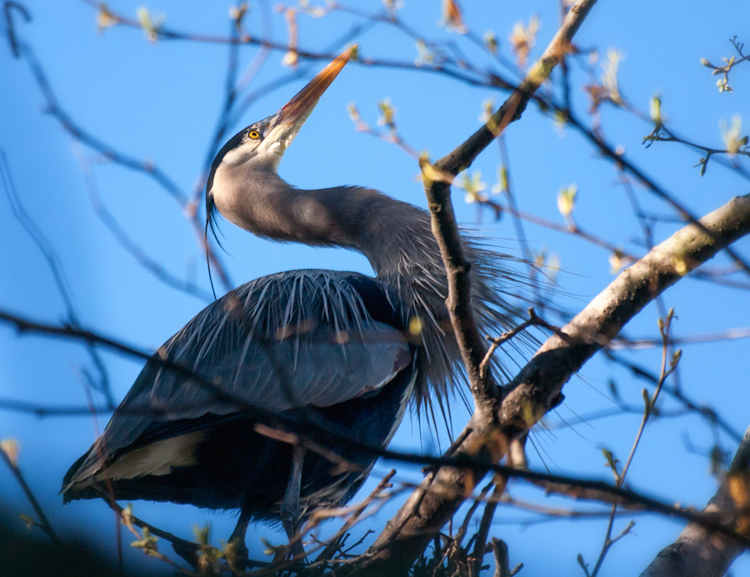
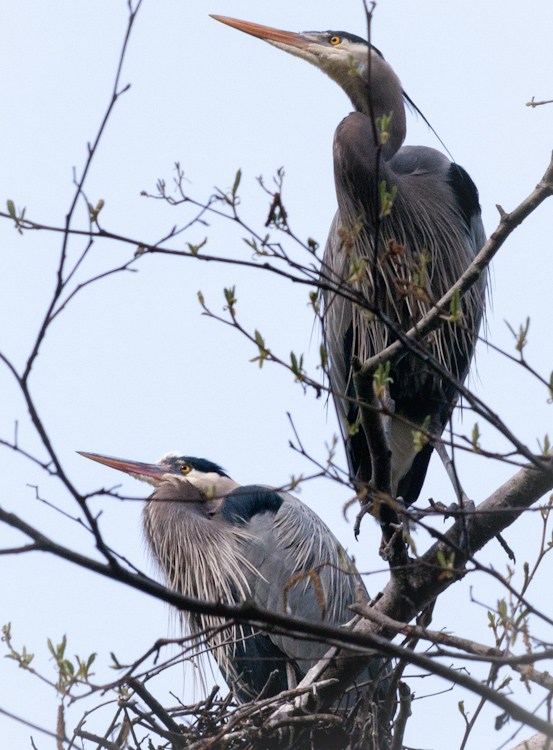
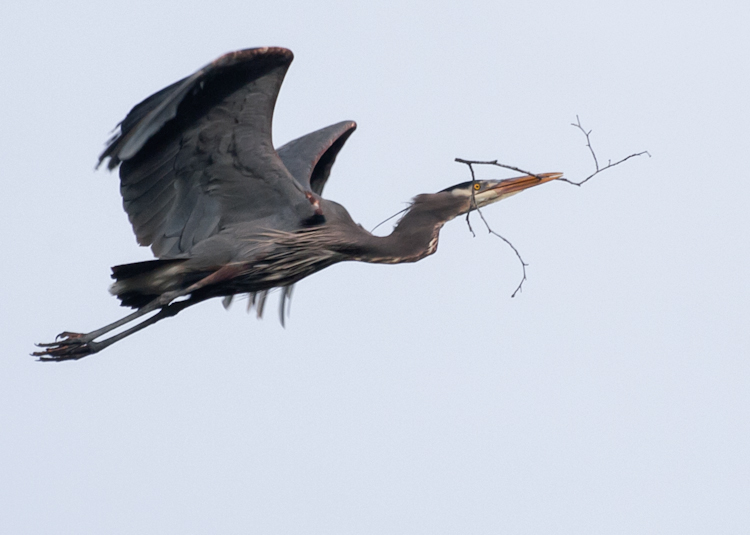
4/11/12: Edited to add this video from the Cornell Lab of Ornithology — a heron’s-eye-view from the nesting branches.

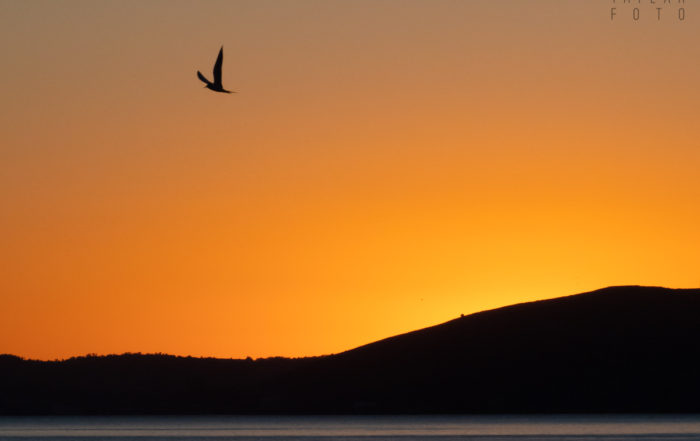
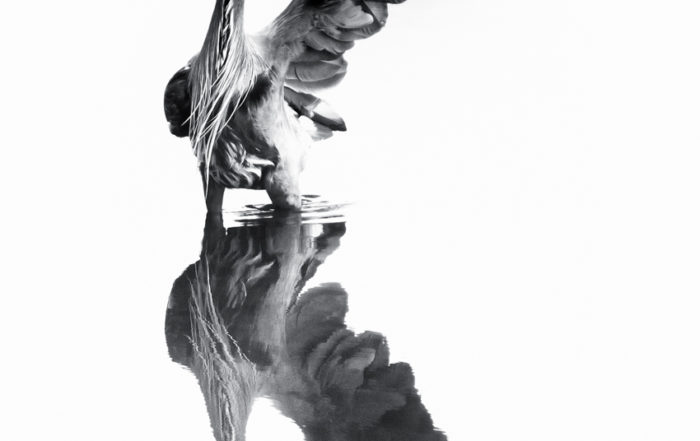
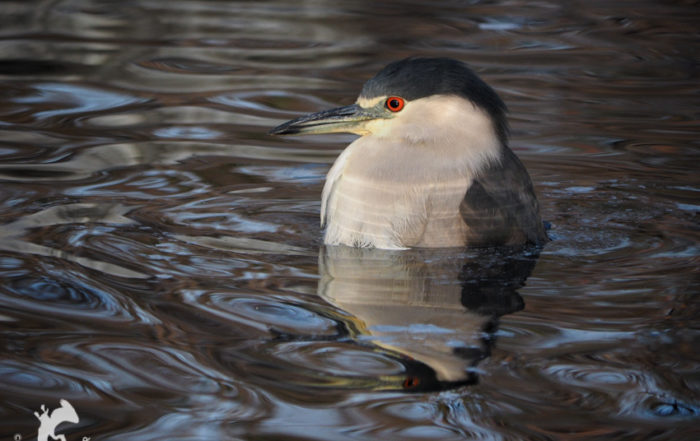
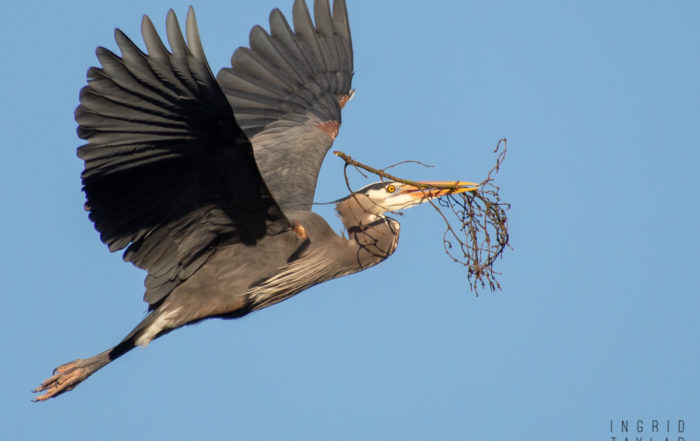
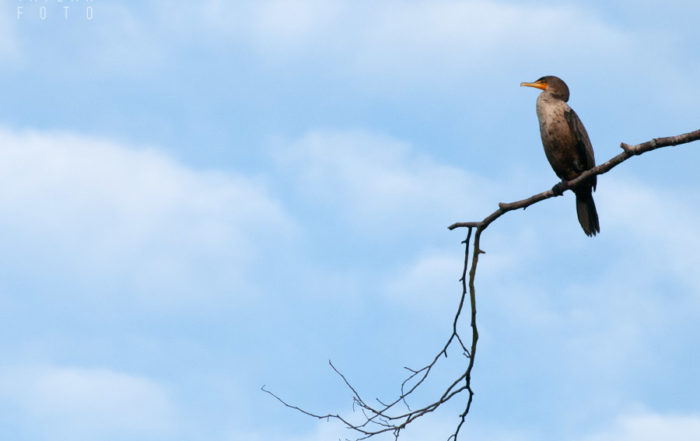
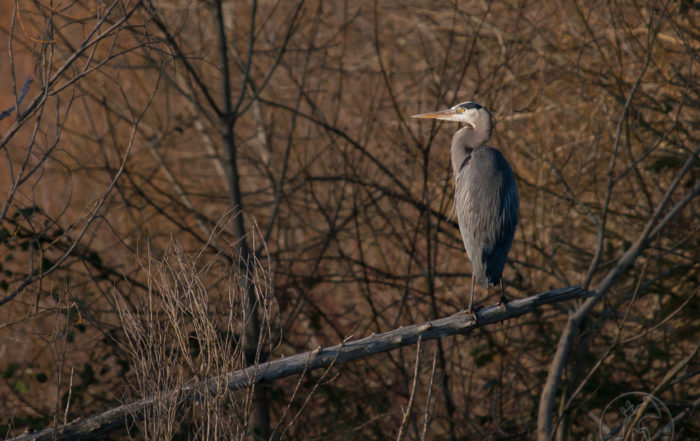
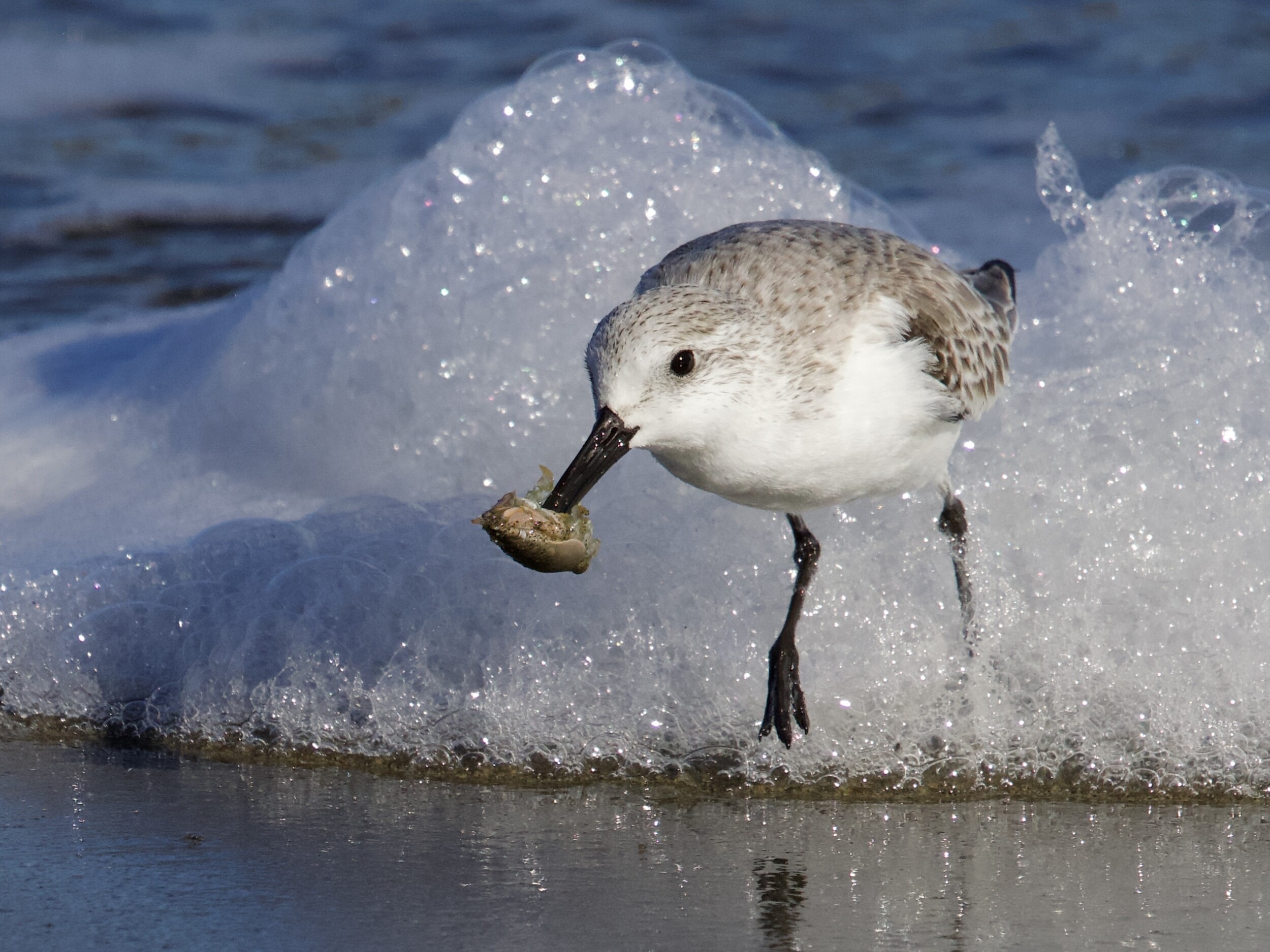
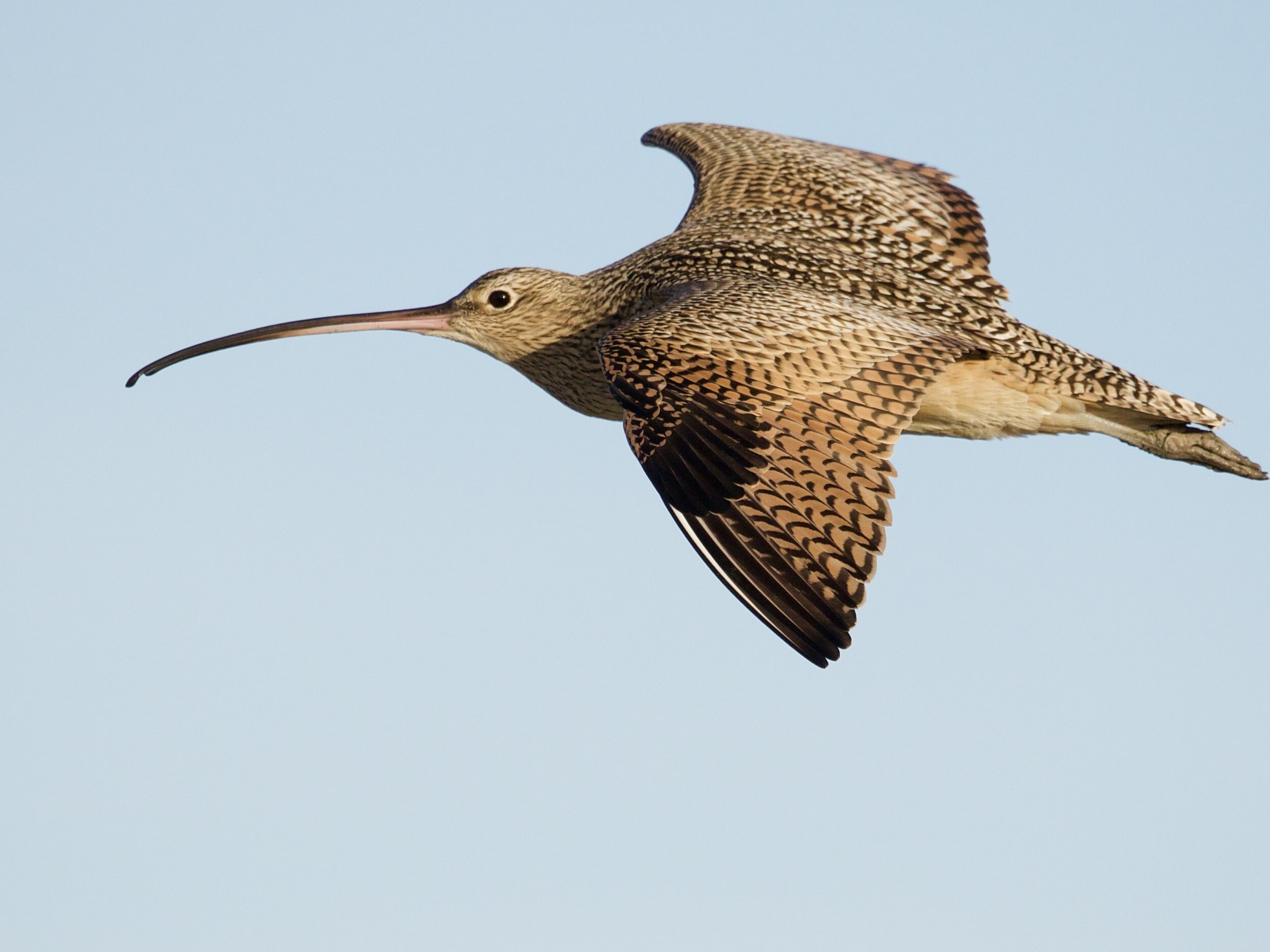
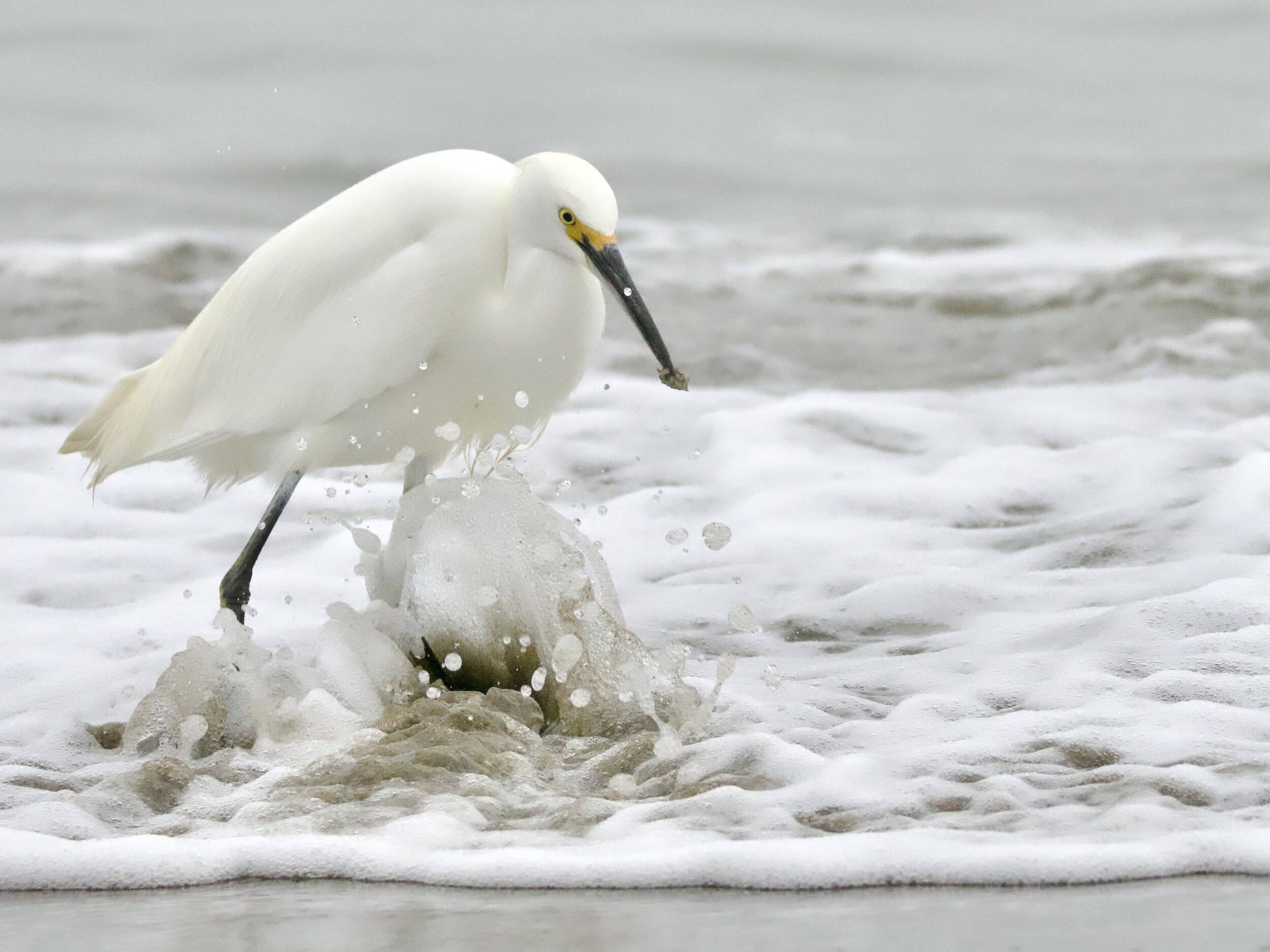
Ingrid, how fortunate that you have access to view and photograph this rookery and the cormorants that hang around too!
I checked with a couple of people who’ve been monitoring the rookery longer than I have, and they talked about how adapted these particular herons seem to be to human presence around their nests. I hope that’s true. I do feel lucky having this proximity! Once the leaves come in on the trees, the herons will have more privacy from the lens, I know.